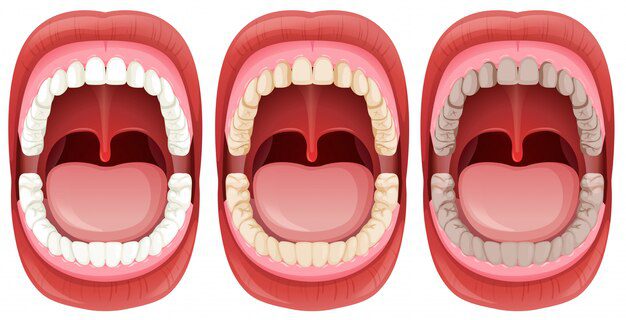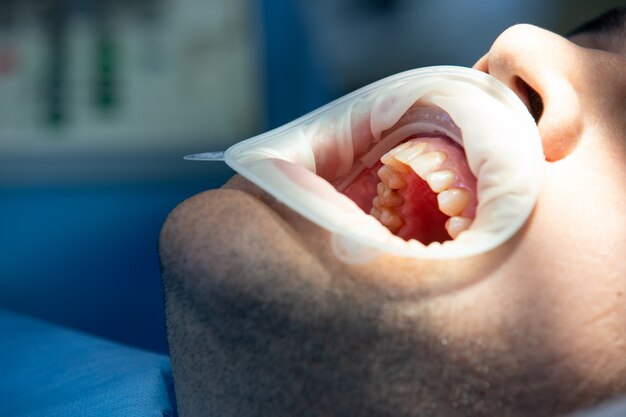⚠️ Medical Disclaimer
Important: This content is for informational and educational purposes only. It should not be used as a substitute for professional medical advice, diagnosis, or treatment. Always consult with a qualified healthcare provider before making changes to your diet, taking supplements, or if you have questions about a medical condition. Never disregard professional medical advice or delay seeking it because of information you read here.
Last Updated on January 24, 2024 by Grace Oluchi
When periodontitis has resulted in bone loss it can form deep uneven pockets around the teeth, this can make your doctor recommend a procedure called osseous surgery, to reduce the depth of these pockets and help bring the area back to a healthy state.
A healthy mouth should be less than a 2- to 3-millimeter (mm) pocket (rift) between the base of your teeth and gums. Gum disease can increase the size of these pockets whereby it becomes difficult to clean at home or even with a professional cleaning by a hygienist. If left untreated for too long, the pockets may continue to get deeper until it gets to a point where you may have to remove the tooth.
Osseous surgery
Osseous surgery also known as pocket reduction surgery, or pocket elimination surgery is a procedure that allows you to get rid of deep pockets, which may be harboring harmful bacteria. It may sound scary due to the “surgery” in its name but you don’t have to be scared as it’s not the kind of major surgical procedure you may be thinking of such as the removal of your appendix.
Check out Appendicitis and how it is totally different from the pocket removal procedure.
Purpose of Osseous Surgery
The main goal of this procedure is to eliminate or reduce pockets formed by gum disease. A mild gum disease that hasn’t spread to your jawbone or connective tissue is called gingivitis. About 90 percent of people around the world have gingivitis.
However, if left untreated it can lead to periodontitis. Periodontitis can cause immense damage to the bone that supports your teeth. Surgeries for gum disease, including osseous surgery, have a high success rate.
Potential risks
Osseous surgery is generally considered safe, but in some cases, it can cause some of the following:
- bleeding or bruising
- tooth sensitivity
- discomfort or pain
- tooth loss
- infection
- gum recession
Most of these outcomes are very uncommon and can leave after a few days if they occur. Most people recover without significant issues, and any discomfort typically subsides within a few days to a week after the procedure. So you don’t have to be scared. If you experience severe or persistent symptoms, contact your dentist or oral surgeon immediately.
Procedure (Steps they take)
Firstly, a periodontist or oral surgeon will give you an anesthetic to numb the area and to make you feel more comfortable during the procedure. Then the doctor will loosen up the gums around your teeth to expose the bone and gum in that area to clean and make a smoother area for your gums to reattach. After that, your gum will be sewn into a new position that will allow you to keep it clean and also prevent any future buildup.
Recovery from procedure
Generally, this procedure is relatively pain-free and you wouldn’t experience much if there is any discomfort during the procedure, and most people can return to their normal lives after a few days.
The periodontist may give you specific recommendations about dietary changes you should make and may even create a meal plan while you’re in recovery. They may also prescribe pain relievers.
Here are some habits that may help you recover from gum surgery much more quickly:
- avoid smoking, which can be hard to do but your doctor can help build a plan that works for you.
- eat soft foods for the first few days.
- no usage of straws until your mouth is completely healed
- change your gauze regularly
- rinse your mouth with salt water after 24 hours
- use an ice pack on the outside of your mouth to manage swelling.
- avoid strenuous physical activity
How much does osseous surgery cost?
According to post house dental, gum graft treatment ranges from £750 to £1200. However, it’s important to note that these prices are an estimate and can vary significantly. It is best to consult with a dental professional or clinic to get an accurate estimate based on your specific case.
Osseous surgery pictures (before and after pictures)


Here’s an example of what your teeth can look like after osseous surgery.
Benefits of osseous surgery
Pocket reduction surgery offers several potential benefits for people dealing with advanced gum disease (periodontitis). Here are some top benefits:
Halting disease progression
Undergoing surgery can put a stop to the progression of periodontal disease by eliminating deep pockets and removing bacteria and tartar below the gumline. This helps prevent further damage to the other supporting structures of your teeth. Getting help early can reduce immense damage to your oral health.
Preservation of teeth
Osseous surgery can help keep your teeth healthy and lower the risk of periodontitis.
Improved oral function
Restoring the supporting bone and gum tissue can contribute to better stability and functionality of your teeth. Such as biting, chewing, and overall oral function.
Better gum health
The procedure encourages the regeneration of healthy gum tissue to promote better attachment to the teeth and reduce inflammation.
Aesthetic benefits
Addressing gum disease can improve the appearance of the gums and teeth affected by periodontitis. Which means your teeth can be whiter giving you a more beautiful smile.
Everyone is different and while osseous surgery offers these potential benefits, its success and outcomes can vary based on a person’s case, oral hygiene practices post-surgery, and follow-up care.
Strategic ways to prevent gum disease (periodontitis)
Brushing properly
Try to brush your teeth at least twice a day using fluoride toothpaste. Use a soft-bristled toothbrush and brush gently in circular motions to remove plaque effectively without damaging your gums.
Regular dental check-ups
Visit your dentist regularly for professional cleanings and check-ups. Dental professionals can detect early signs of gum disease and provide the necessary treatment for you.
Flossing daily
Clean between your teeth daily with dental floss or interdental brushes to remove plaque and food particles from areas your toothbrush can’t reach. Many people don’t do this but now that you know help them by sharing this information with them.
Healthy diet
Consume a balanced diet rich in fruits, vegetables, whole grains, and lean proteins. Limit sugary snacks or sugary drinks, as they contribute to plaque formation.
Avoid smoking
Smoking increases the risk of gum disease and hinders healing. Quitting smoking can significantly improve your oral health.
Manage health conditions
Certain health conditions like diabetes can increase the risk of gum disease. Manage these conditions effectively to reduce the risk of periodontitis.
Use antiseptic mouthwash
Rinse your mouth with an antiseptic or antibacterial mouthwash to reduce plaque and prevent bacterial growth. However, it should not replace brushing and flossing as these two are very important for oral health.
Osseous surgery alternatives
If your gum disease has reached a chronic state, osseous surgery may be the next best thing to do. However, some processes like root planning and scaling may be recommended in cases of mild gum disease.
Scaling and root plan
Scaling and root planning are some of the top go-to treatment options for periodontitis.
A dentist may recommend this procedure if your case isn’t severe. The thing about scaling and root planning is, that they offer a deep cleaning method that involves scraping away built-up plaque and smoothing exposed parts of your roots.
Antibiotics
In some cases, antibiotics in the form of pills, mouth rinse, or gels might be prescribed to get rid of bacteria built up in your pockets.
Laser therapy
Some dentists use lasers to remove diseased tissue and bacteria to promote the regeneration of healthy gum tissue. Laser therapy can be less invasive than traditional surgery and may result in quicker recovery times.
Bone grafting
If gum disease has terribly damaged the bone around your tooth, a dentist may recommend bone grafting. The graft is made of pieces of your own bone, donated bone, or synthetic bone. Then after surgery, new bone will grow around the graft which will help keep your tooth in place.
Gum grafting
In situations where gum recession has occurred, soft tissue grafts can be done. During this process, a piece of your skin is used to cover exposed tooth roots. So that your teeth can function well, and also help with aesthetics.
The type of treatment or alternative to osseous surgery depends on various factors, such as the extent of the gum disease, individual patient needs, and the recommendation of the dental professional. Often, a combination of treatments may be done for optimal results.
Take away
Advanced gum disease can lead to pockets between your teeth and gums. These pockets can immensely cause damage and tooth loss if your gums and bones are severely damaged.
Osseous surgery is the next best step to eliminate these pockets if they become deeper than 5 mm. To avoid this situation from occurring, follow good dental hygiene. To maintain a healthy mouth, do the following activities:
- paying your dentists a regular visit
- brush your teeth twice a day
- flossing your teeth every day
- reducing sugary beverages
- using fluoride toothpaste
- quit smoking and avoid using all tobacco products
Frequently asked questions
When is it really time for osseous surgery?
If thorough scaling and good oral hygiene aren’t able to get pocket depths reduced to the point that you can maintain them, you may have to undergo surgical treatment, to reduce the pocket depths and gain tissue attachment.
How long does it take?
It actually depends on the number of teeth that need treatment. But in most cases, periodontal osseous surgery takes about 30 minutes to an hour. I
Is osseous surgery really painful?
Pocket reduction surgery isn’t something to be scared of, like most surgical procedures, you may experience some degree of soreness afterward. But you shouldn’t have severe pain or discomfort that keeps you up at night and interferes with your day-to-day life. However, if you do develop pain that doesn’t get better with medication, contact your periodontist.
How long does it take to recover?
Your recovery process depends on several factors, including the number of teeth treated, the intensity of your condition, and your body’s ability to heal. However, on average, recovery should take between two and four weeks.
What should I not do before osseous surgery?
In preparation for your pocket elimination surgery, don’t smoke, take sugary drinks, or drink alcohol, 24 hours prior to your appointment. Make sure you eat a good meal and drink enough water. You may need to stop taking blood-thinning medications like aspirin or warfarin (your healthcare provider will inform you when to stop).
Overall, to be prepared in the best way possible, talk with your periodontist.

